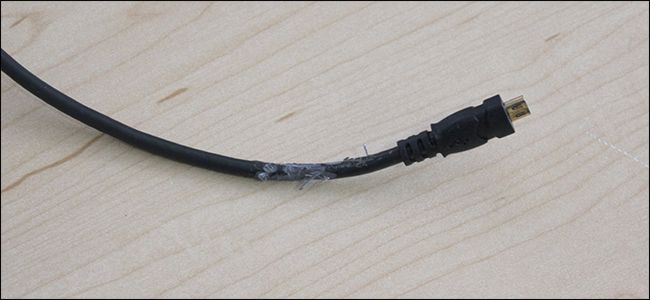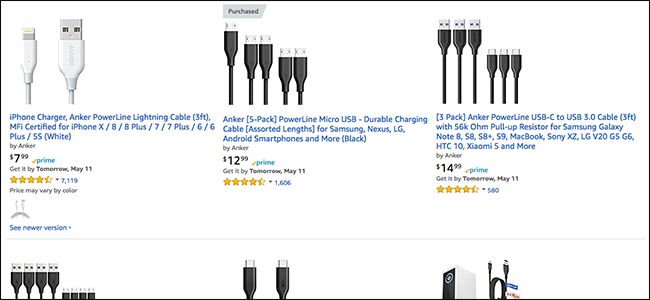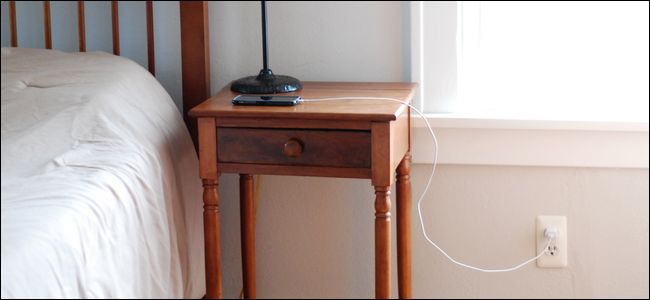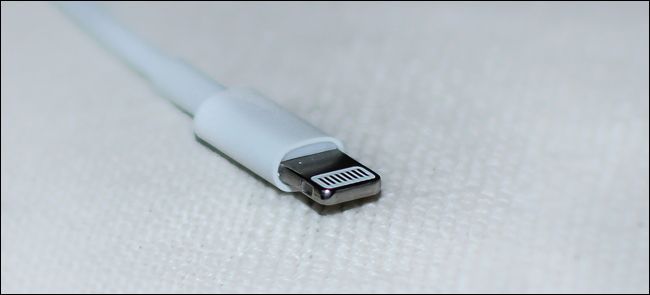Quick Links
Whether it's from overuse or your damn cat, damaged and frayed USB charging cables are a common occurrence. It's usually not worth the time and extra money spent trying to repair them.
You've probably experienced a damaged charging cable at some point. When smartphone batteries barely last an entire work day, you're using those cables often. They also get subjected to all kinds of other abuse. Maybe you repair them, and maybe you don't, but generally you're better off just trashing them and buying a new replacement.
It's Usually Cheaper to Buy Replacements Anyway
You can Google how to fix a damaged charging cable and you'll find a ton of content giving you cheap ideas on how to do just that, but it's usually not worth the time, money, and effort---especially considering that new charging cables are pretty cheap to begin with.
Most solutions for fixing damaged charging cables require materials that you probably don't have just lying around your house, like heat shrink tubing or Sugru. You might have electrical tape on hand, but that's usually a poor---and rather ugly---solution.
It's best to just toss out any damaged cables and buy new replacements. You can get a basic Lightning cable for $6-$7 on Amazon, or a new microUSB cable for even cheaper.
You can sometimes even get a free replacement cable if yours breaks or becomes damaged in any way. Apple Lightning cables (as well as AmazonBasics cables) come with a one-year warranty, and Anker offers an 18-month warranty on their cables. Sometimes, though, if you ask nicely, you can get a free replacement long after the warranty has expired. Your mileage will vary, of course, but it's always worth a try.
When it comes to more expensive charging cables, like a laptop charger, repairing it might actually be worthwhile. Considering that a new MacBook Pro charger is $80, it's usually not practical to throw your damaged one out and buy a new one. Obviously, if some of the actual wires are fraying, that's one thing. But if it's just the outer sheathing that's damaged, repairing it can at least buy you some more time.
How to Prevent Damaged Cables in the First Place
Experiencing a damaged charging cable is simply unavoidable sometimes---I've been through my share of damaged cables that I believed were being lightly used. It happens, but there are some ways to at least lessen the frequency and the chances of damaging a charging cable.
First off, the obvious: try not to harshly bend your cables in any way. This puts a lot of stress on the outer protective sheathing, and with enough repeated abuse like that, the sheathing will begin to fray pretty easily.
If you frequently use your device while it's charging, you might be surprised at how much twisting of the cable can go on. Pick up your phone and put it down a few times in different orientations, and you can put a fair bit of stress on your cable.
If you'd rather not have to worry about treating your cables more carefully, there are plenty of higher-quality cables you can buy that come with durable and reinforced sheathing, like this Lightning cable from AmazonBasics and these microUSB cables from Anker.
They're a bit more expensive, sure, but they'll pay for themselves when you don't have to constantly replace them every year or so like you would with regular cables.
Be Careful When Using a Damaged Cable
If you have a damaged cable and it still works fine, it's likely that the actual wires aren't damaged, but rather just the outer protective layer. However, you still have exposed wires there, which isn't all that safe.
The chances of anything shorting out and creating a fire hazard are probably small, but it's still not something you want to take a big chance with. At the very least (and after repairing the cable), be more careful with it and don't use it unattended.
In the end, though, "repairing" a damaged cable with electrical tape or something else doesn't really truly repair it. It just covers up the underlying issue and maybe buys you a bit more time before you truly need to replace it---you still have a damaged cable, and the repair likely won't prevent the damage from getting worse over time.




